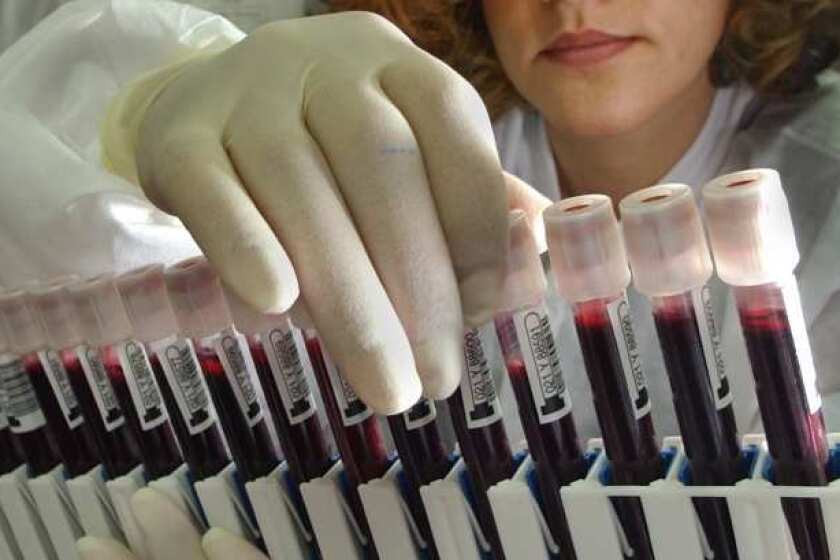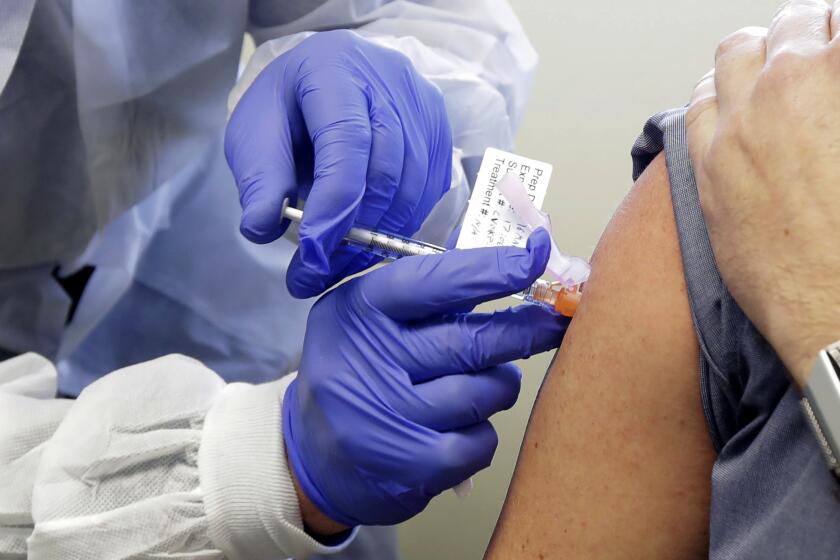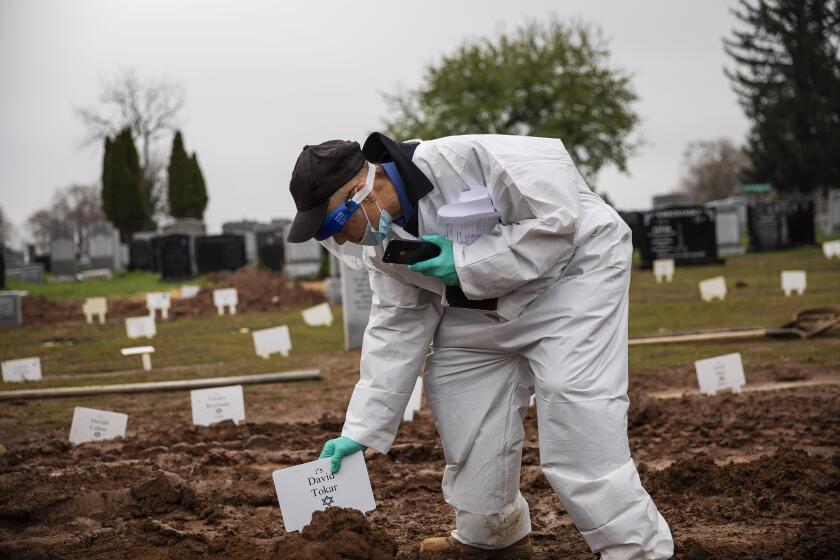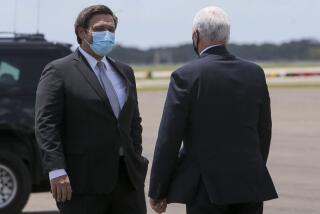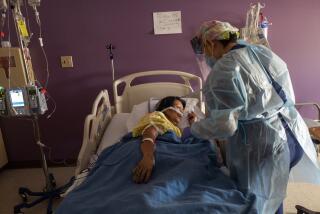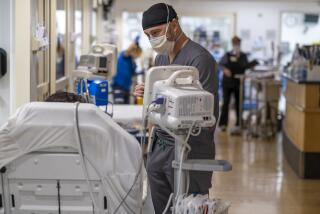Florida’s curve is no longer flat amid a new surge of coronavirus cases

- Share via
MIAMI — Fighting a surge in coronavirus cases in the spring, Florida appeared to be “flattening the curve” as theme parks shuttered, beaches closed and residents heeded orders to stay home. Now, it’s almost as if that never happened.
Bars, restaurants and gyms began reopening in May. Critics said it was too soon, and weeks later the Sunshine State became one of the country’s virus hot spots, experiencing an alarming surge in cases. On Thursday, officials reported 120 deaths in one day, the highest number since the previous record of 113 in early May.
“We thought maybe we could keep this thing under wraps. And that worked for a little bit of time,” Dr. Jason Wilson, an emergency room physician at Tampa General Hospital, said during a conversation with Tampa Mayor Jane Castor that was livestreamed Wednesday on Facebook. “But eventually ... it caught up to us.”
From Miami to Jacksonville and Tampa, hospitals in June and July have seen their numbers of coronavirus patients triple, with new patients outpacing those being discharged.
A record 435 newly hospitalized patients were reported Friday to have tested positive for the virus, including some who sought care for other reasons and aren’t necessarily symptomatic. There were 6,806 patients being treated for COVID-19 in Florida hospitals, according to a new tally that state officials started releasing Friday. Before that, available data only showed overall hospital occupancy and capacity, including noncoronavirus patients.
Hospital networks are scrambling to hire more healthcare workers to expand their COVID units. Last week, hospitals in several cities announced they would again halt or reduce nonemergency procedures to free up space.
Under mounting pressure from scientists, the World Health Organization allowed that the coronavirus might float in the air and issued new guidelines recommending people avoid enclosed spaces with poor ventilation.
Wilson and other health experts believe the spike was caused in large part by young people who weren’t experiencing symptoms and were more likely to take fewer precautions while gathering at reopened bars and crowded beaches.
“We saw the floodgates open really for young people having what we call asymptomatic or presymptomatic spread,” he said. “Three weeks later, we are starting to see everyone else starting to get the virus as well.”
The state’s predicament echoes that of other current hot spots. Texas, which is marking its deadliest week of the pandemic, on Thursday reported a record daily death toll of more than 100, a new high for hospitalizations for the 10th consecutive day, and a nearly 16% positive test rate, its highest yet. In Arizona, hospitals were at nearly 90% capacity, with a record 3,437 patients hospitalized as of Wednesday, and a record number of those — 575 — on ventilators, health officials said. Earlier in the week, a record high number of 871 patients filled ICU beds.
Before I came down with COVID-19, I could run for miles. After returning from the hospital, I needed a wheelchair to go even half a block.
In Miami-Dade, Florida’s worst-hit county, a few smaller hospitals have run out of ICU beds completely, though countywide about 14% were still available as of Friday, the state health agency reported. Even hospitals with some of the biggest ICUs in the state are stretched: Tampa General currently has 70 patients who are infected, half of whom are in ICU beds, Wilson said.
At more than 45% of Florida’s hospitals, intensive care units were at capacity or had fewer than 10% of their beds available as of Friday, the state Agency for Health Care Administration reported on its website.
However, many hospitals can convert additional beds to ICUs, and Gov. Ron DeSantis said at a news conference Friday that no major hospital in Florida had yet “gone to the surge level.”
Scientists are finding evidence that blood type may be a risk factor for COVID-19. In one study, people with Type A blood were more likely to be hospitalized.
Florida Agency for Health Care Administration Secretary Mary Mayhew said her agency is working with hospitals to open up beds by discharging patients who can be cared for at home through telehealth, and sending COVID-19-positive patients who don’t need hospitalization to nursing facilities where they can be isolated.
“We’re focused on how we can help hospitals decompress so that their beds again are used for individuals who absolutely require hospital level of care, both COVID and non-COVID,” Mayhew said in an interview.
Chad Neilsen, the infection prevention director for UF Health Jacksonville hospital, anticipates the hospital will run out of rapid coronavirus test kits in about two weeks or maybe sooner because manufacturers can’t keep up with demand. He said the hospital instead will have to rely on commercial labs, which can take several days to return results. Quest, a company that operates many labs, said this week that it was potentially facing an even longer turnaround because of high demand.
Scientists have devised a way to use the plasma of COVID-19 survivors for an upper arm injection that could inoculate people against the virus.
Slower test results have a domino effect because a hospital has to assume that every patient with flulike symptoms has COVID-19, meaning it will burn through its protective equipment and other gear much more quickly.
“For a hospital, that’s a big problem,” Neilsen said. “We have patients that need surgery that we want to test. We have mothers about to give birth that we want to test.”
The rise in hospitalizations comes as physicians and nurses have been working around the clock for months, and during the summer, when facilities are typically lightly staffed. DeSantis just deployed 200 nurses to fill staffing shortages in Miami and Tampa, and has pledged to send hundreds more.
“We’re just overwhelmed with patients. ... Right now, it’s like all hands on deck,” said Esther Segura, a nurse at Miami’s Jackson South Medical Center, who said she and her colleagues were weary after four months working in the pandemic. “Now we’re just spiking all the way. Every day the numbers keep surging.”
Physicians and hospital officials are also concerned about how long it takes to discharge patients.
Researchers calculate that there were 122,300 more deaths in the U.S. in March, April and May this year than are typically seen during that three-month period.
Yolanda Villalobos of Homestead, a Miami suburb, said her husband, Julio Alejandro Berrios, was on a ventilator for weeks at one of the first intensive care units to fill up in the Miami-Dade area. The 37-year-old, 300-pound man was feverish, delusional and screaming in pain when Villalobos called paramedics.
“I thought he would be there three days or a week at the most,” she said.
In both Jacksonville and Miami, doctors expressed worries about the uptick in the number of patients on ventilators. The Florida Hospital Assn.’s interim president, Crystal Stickle, said providers are all trying to get their hands on the drug remdesivir, which has been shown in a clinical trial to help with treatment of the disease.
Stickle said initially the governor and federal lawmakers helped obtain quantities of the drug that the state health department then distributed to hospitals. But beginning next week, she said, the drug will begin shipping directly to hospitals.
More to Read
Sign up for Essential California
The most important California stories and recommendations in your inbox every morning.
You may occasionally receive promotional content from the Los Angeles Times.

